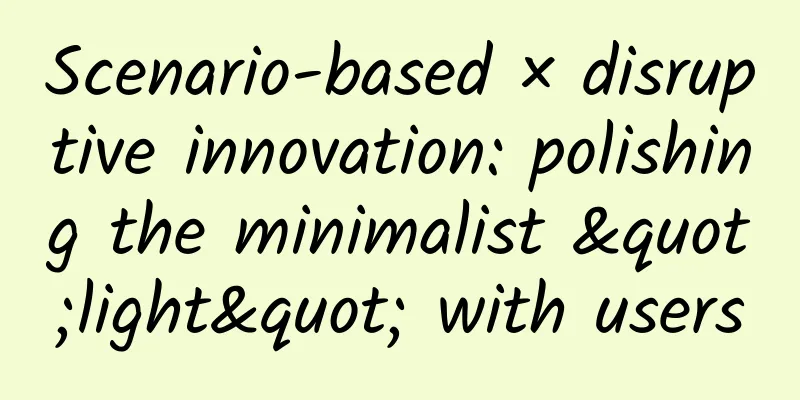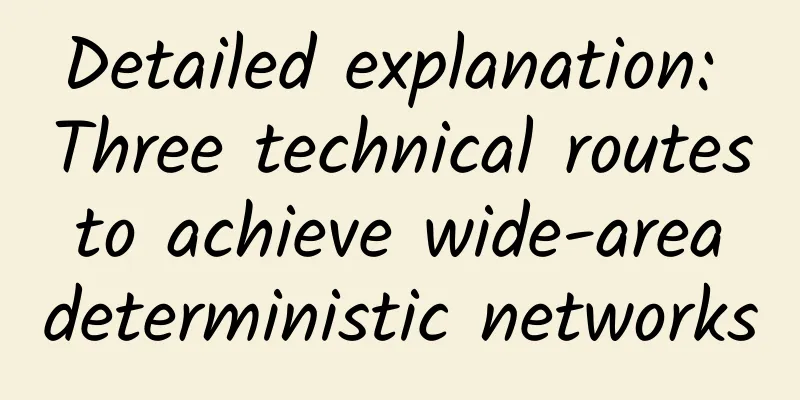F5: Five trends in enterprise AI applications in Asia Pacific by 2025

|
Over the past year, I have had the privilege of speaking with many business leaders across Asia Pacific. Regardless of industry, the challenges they mentioned are highly consistent: Artificial Intelligence (AI) is no longer a distant possibility, but is now a reality in our daily lives and is reshaping industries at an unprecedented pace. The sense of urgency conveyed by these conversations cannot be ignored. Today, the key question facing companies is no longer whether to adopt AI, but how to promote the application and implementation of AI faster and more responsibly. Looking ahead to 2025, Asia Pacific is expected to become a global leader in AI-driven innovation. However, this transformation is not an easy journey. As I have observed in my practice, the expansion of AI is both an opportunity and a challenge. Faced with the exponential growth of data volume, increasingly stringent regulatory requirements, and complex and ever-changing cybersecurity threats, Asia Pacific is at a critical historical node. In this article, I will share my insights into the five major development trends of enterprise AI applications in 2025, and explore how enterprises can seize opportunities, mitigate risks, and achieve sustainable growth by focusing on intelligent expansion, security, and trust building. Expanding AI infrastructure In my conversations with many chief information officers (CIOs) and chief information security officers (CISOs), the most common challenge I hear is that current infrastructure is not ready to handle the demands of the AI era. The rapid growth of AI-driven applications has brought about a surge in application program interface (API) traffic, which has put unprecedented pressure on networks and systems. This trend is expected to become more pronounced in 2025, making scalable infrastructure a strategic necessity for enterprise success. Without sufficient scalability, enterprises may face serious operational bottlenecks, resulting in reduced system efficiency, frustrated user experience, and even affected brand trust. Fortunately, smarter tools are helping companies meet these challenges. For example, intelligent caching and dynamic traffic routing technologies are reducing latency and effectively managing traffic growth. In the Asia-Pacific region, more and more companies are adopting a unified traffic management platform to simplify workflows, optimize resource allocation, and improve system scalability. In the AI-driven future, building a resilient and highly adaptable infrastructure will become the core driving force for companies to achieve sustained growth. Taking the Chinese market as an example, it is estimated that by 2028, the scale of China's AI basic data service market will reach 17 billion yuan, with a compound growth rate of 30.4% in the next five years. This rapid growth reflects that Chinese companies are accelerating the layout of AI infrastructure to cope with the rapidly growing demand for technology and strive to take the lead in global competition. AI-driven governance and security By 2025, scaling AI will go hand in hand with ensuring its security. In Asia Pacific, business leaders are facing a dual challenge: increasingly sophisticated cyber threats on the one hand, and evolving regulatory requirements on the other. These challenges are forcing companies to shift from “ whether to respond ” to “ how to adapt quickly ” to take the initiative in the competition. Currently, large language models (LLMs) are driving changes in various industries, but they are also gradually becoming the main target of cyber attacks. For example , prompt injection vulnerabilities have made AI chatbots, which were once widely trusted, a potential risk, seriously undermining customer confidence. Similarly, APIs, which are at the core of modern systems, have frequently become a breakthrough point for attackers, further amplifying security risks. To address these challenges, companies are actively adopting proactive threat detection and automated compliance tools to build a strong defense system. Currently, more and more leaders are deeply embedding governance into daily operations and responding to dynamic changes in regulations through real-time adjustments. This forward-looking thinking is gradually becoming a core pillar of security strategy, helping companies accelerate innovation while ensuring trust. Cost optimization strategy to do more with less AI brings huge potential, but the resource requirements are equally huge. As enterprises further expand the scale of AI applications in 2025, the demand for computing power (especially graphics processing units GPU) is growing rapidly, which has brought operational pressure to many enterprises. However, the good news is that cost optimization strategies are evolving rapidly to help enterprises achieve more goals with fewer resources. Semantic caching is an innovation that can significantly improve efficiency. At an AI innovation center in Bangalore, India, I saw this technology in action: by storing commonly used data, semantic caching can reduce inefficiencies, speed up data analysis, and provide faster and more cost-effective solutions. This technology may seem simple, but it is extremely powerful. Smarter GPU allocation is also one of the key trends at present. By optimizing resource allocation and focusing computing power on the most critical tasks, enterprises not only reduce waste, but also significantly improve resource utilization efficiency and return on investment. These strategies are not only technological innovations, but also lay a solid foundation for sustainable and scalable AI applications, helping enterprises gain an advantage in the AI-driven future. Frontier Exploration of Human-Robot Collaboration Among business leaders in Asia Pacific, there is a core consensus that AI is not about replacing humans, but about enhancing their capabilities. The true value of AI lies in how it helps humans make smarter decisions, automate repetitive tasks, and uncover new insights. In healthcare, AI is helping doctors make faster and more accurate diagnoses; in finance, AI is changing the way fraud is detected, discovering complex patterns that human analysts would miss. I am even more inspired by the fact that many leaders are prioritizing building systems that enable employees to work effectively with AI. This investment not only increases trust, but also inspires innovation. Looking ahead to 2025, platforms that enable access to AI will gain widespread attention. By removing technical barriers, these platforms will help teams innovate faster and more efficiently, completely reshaping the way they collaborate and create. Deep integration of AI and emerging technologies AI in 2025 is no longer an isolated technology. When AI is deeply integrated with technologies such as the Internet of Things (IoT), edge computing, and cloud-native architecture, its true potential will be fully unleashed. The Asia-Pacific region has shown unique advantages in leading this integration trend. In my work at F5, I am witnessing these changes firsthand: in the retail industry, AI-driven recommendation engines are providing highly customized customer experiences, while predictive analytics are optimizing inventory management, ensuring product availability at critical moments while minimizing waste; in the telecommunications industry, AI is significantly improving network performance through real-time problem solving and predictive bandwidth management. These innovations not only drive seamless connectivity, but also deliver a more personalized user experience. These cases highlight a common theme: building an open and scalable ecosystem to respond to changing needs is key to achieving continuous innovation for enterprises. Outlook 2025: AI deployment focuses on three core areas 2025 will be a turning point for the development of enterprises in the Asia-Pacific region. In this year, enterprises' AI deployment will move from pilot exploration to full deployment, focusing on three core areas: intelligent expansion, security assurance, and trust building. However, the significance of expanding AI is not only to drive growth, but also to redefine the position of enterprises in the AI-driven world. This is a profound thinking and layout for the future. AI is no longer the future, it has already arrived. What we are facing is how to seize the opportunity in this transformation. F5 is ready for the wave of the AI era. Are you ready to take on the challenge? By Adam Judd, Senior Vice President of Sales, Asia Pacific, China and Japan, F5 |
Recommend
RAKsmart: US VPS monthly payment starts from $0.99, 4G memory cloud server starts from $4.99/month
RAKsmart has launched a new promotion in October,...
Buildings evolve from "intelligent" to "smart", CommScope drives the interconnection of smart buildings
[Original article from 51CTO.com] June 5, 2018 - ...
What are the technical difficulties in implementing a multi-person collaborative online document?
This is a long-awaited answer. It just so happens...
HPE acquires Athonet to expand wireless connectivity leadership
HPE (NYSE: HPE) today announced the acquisition o...
Gigsgigscloud Japan CN2 Special Package Simple Test
The day before yesterday, we shared the product i...
Cabling technology continues to evolve to meet rapidly growing network needs
[[413152]] Commercial building renovation Commerc...
Dubbo 3.0? No! RSocket is the eternal god
[[411111]] background The hottest topic in the do...
HostXen offers a 50 RMB bonus for every 300 RMB you spend during Double 11, and a 150 RMB bonus for every 600 RMB you spend. 2G packages for Japan/Hong Kong start from 70 RMB, and new customers will receive coupons
HostXen's Double 11 event actually started on...
Understanding the differences between 5G and Gigabit LTE
5G is coming, at least some carriers think so. Bu...
9 correct views on the cancellation of data roaming charges
On July 1, data roaming charges were officially c...
Intent-based networking: Closing the network complexity gap
In the past decade, networks have undergone a var...
Omdia: Global Gigabit Broadband Users to Reach 50 Million by 2022
According to the latest report released by market...
An oscillation almost ruined my work. It turned out to be caused by an IP address conflict!
Switches are in the arena, and it is not okay to ...
5 Strategies for Monetizing Mobile Edge Computing (MEC)
In the past few years, cloud services have been u...
As work-from-home increases, so do attacks on VoIP and unified communications
As companies have shifted to a work-from-home mod...









